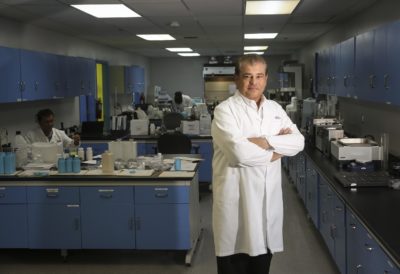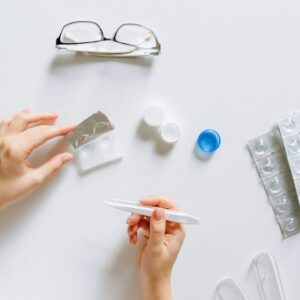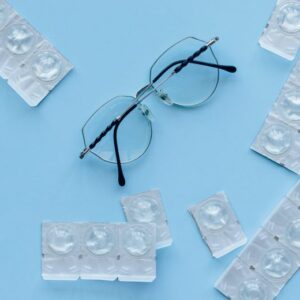
Why is the Covid-19 drug taking so long to get approval? That question has probably been asked a million times over the past eight months. Most people will never understand the complexity and challenges faced by thousands of researchers working on the solution. This article may help explain the process being used by many in the field of medical research. Fred Sancilio is personally involved in one of these studies, and he shared his insight about why a Covid-19 drug takes so long to get approved.
Back in March, the pandemic was just heating up in the United States, but Fred had been monitoring the events in Asia and Europe for the weeks leading up to the March outbreaks in the US. He became concerned when his colleagues were beginning to panic as the number of patients streaming into their hospitals exploded. Long before masks became a mantra for people facing this disease, Fred was having tens of thousands of N95 masks shipped into Italy as their own supplies dwindled. Soon, requests for more masks drained Fred’s suppliers in Asia, and He was unable to keep up. However, local European and American manufacturing soon made up the slack and began meeting the demand.
Having been in the drug development field for over 4 decades, Fred Sancilio built a global network that allows him to stay abreast of issues occurring overseas long before they’re heard of in the United States. This time, he was hearing simultaneously that a virus was killing thousands of Asians and Europeans, most of whom were older, frail people. Fred was bombarded with dozens of messages from all over the world pointing toward treatments being used that were promising. Fred simply couldn’t keep up with all the speculation and miracles that seemed to cure some but allow others to die from the infection. However, what Fred has learned in his time as a drug researcher is that treatments that appear to be miraculous are nearly always coincidental, and the overnight cure is seldom a real one.
Statistically, relevant testing protocols provide the only way to be certain a cure is a cure and not an anomaly according to Dr. Fred Sancilio. This reality created the need for a systematic method for the evaluation and approval of all medications in the United States. We are one of the few countries in the world that have developed rigid and proven methods that must be used by researchers before a new drug therapy can be officially used to treat patients with the US Food and Drug Administration’s approval.
Factors to Consider

Consider this; when someone gets infected by Covid-19, one of three things may happen: he/she may not have symptoms at all and is rid of the virus in about 2 weeks (40%), he/she may have symptoms and seek treatment and gets better (57%) or he/she may get very sick and die (2.8%). While these numbers change constantly depending on demographics, out of 100 people tested in the middle of the pandemic, about 6 were found to be positive. However, the test itself isn’t entirely accurate, and as much as 4% of the positive results are actually negative. In addition, the number of false negatives, that is, people who test negative that are really infected (positive) is reported to be 29%!
So, let’s get down to discussing how the United States FDA challenges drug developers to prove that a drug really works when there is so much variability in the testing and regional demographics. First, let’s imagine that we are going to try and prove that a drug can prevent infection of Covid-19. If we design a study with 2000 healthy people and give half of them the “new test drug” and half a placebo (fake tablet with nothing in it), we’d have 1000 people in each group. Since we know that the population of normal healthy people who get infected is about 2.5% (of 320,000,000 Americans there were roughly 8,000,000 cases or 2.5% of Americans have been infected over an 8 month period), our study is presumed to have 20 or 30 people in each group that would be infected under normal circumstances. Sadly, it’s more complicated than that!
While 2.5% of Americans got infected, they became infected at different rates in different places. The 2.5% represents an average of the entire United States where the actual range of infection was from 0.4% to 4.1%. Saying the infection rate was 2.5% is correct, but one must recognize that this number is an average of the country with a range from 0.4% to just over 4%. This error will cause huge swings in the test results of a clinical trial. In a perfect world where exactly 2.5% of the population always got sick, the placebo group would have either 20 or 30 people testing positive over a period of 8 months. But in the real world, the placebo group would actually range from 4 – 40 infected people considering the real variability and demographics. Assuming the test drug was 80% effective, the group taking the test drug would have any number between 1 and 8 positive people in the group. Thus, the placebo and test groups would have overlapping ranges of infected populations, resulting in a failed trial.
How do you design a study for a drug that is effective in this case? The answer is to increase the number of people in each group and select a diverse population from a wide demographic! Failure to do this will result in poorly designed trials that wouldn’t pass muster with the FDA. Prevention trials are extremely hard to design and conduct due to the diverse demographics of the American population. With extremely restrictive “inclusion criteria” and “exclusion criteria”, a population of people could be designed to overcome the diversity, but in all likelihood, the number of people in such a study would likely be over 10,000. Running such a study is an enormous task requiring over a hundred million dollars per trial. Currently, Fred believes there are at least 6 of these kinds of trials ongoing as of the release of this article. This is an enormous effort and has drained the capacity of the country to perform other important clinical research.
Out of 124,000,000 (that’s 124 million) tests of Americans, about 8,000,000 (8 million) tested positive. That’s 6.5% of people tested got a positive result. However, of those that were positive, 320,000 were falsely diagnosed as positive and were, in fact negative! When you look at our country as a whole, having around 320,000,000 (320 million) people living in it, 8 million were deemed to have the disease which represents 2.5% of the population. However, 224,000 were reported to have died as a result and that represents 0.67% of the total population of the country. Many of the casualties had severe comorbidities (were very sick to begin with), and nobody knows how many people have died that wouldn’t have otherwise died from existing conditions. What is surprising is that using global statistics, 1.1 million people have died to date out of 40,000,000 infected which is a 2.8% death rate. In the United States, the death rate among infected people is identical to the global numbers. That leads Fred to believe that the pandemic has no borders or favorites and kills exactly the same regardless of where or how we live! The “cure” will eventually be found, as researchers strive to design reliable clinical trials, but until that happens, there isn’t much we can do. At this point, Covid-19 simply appears to strike down 2.8% of those infected, regardless of anything a diverse global community can do.


